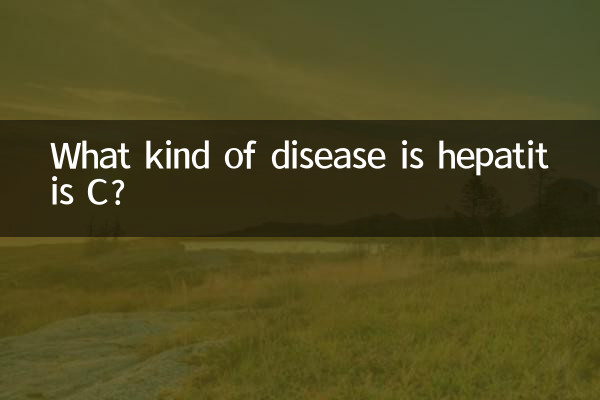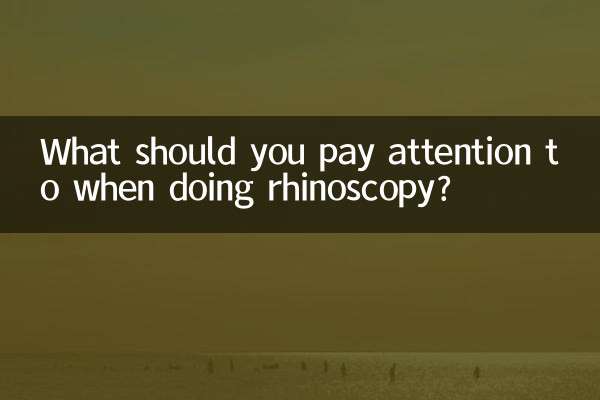What kind of disease is hepatitis C?
Hepatitis C (hepatitis C for short) is a liver disease caused by the hepatitis C virus (HCV). In recent years, with the deepening of medical research and the improvement of public health awareness, the detection, treatment and prevention of hepatitis C have gradually become a hot topic of social concern. This article will combine the popular discussions on the Internet in the past 10 days to introduce you to the relevant knowledge of hepatitis C in detail and present key information in structured data.
1. Basic concepts of hepatitis C

Hepatitis C is a viral hepatitis that is spread primarily through blood. Unlike hepatitis B, there is currently no vaccine to prevent hepatitis C, but its cure rate is high, and early detection and treatment are crucial. The following is a comparison of hepatitis C and other hepatitis data:
| Type | Pathogen | Transmission route | vaccine | cure rate |
|---|---|---|---|---|
| Hepatitis A | HAV | Fecal-oral transmission | Yes | high |
| Hepatitis B | HBV | blood, body fluids | Yes | Partially curable |
| Hepatitis C | HCV | Mainly blood | None | More than 95% |
2. Transmission routes of hepatitis C
According to recent medical reports and public discussions, the main transmission routes of hepatitis C include:
| Communication method | risk level | Precautions |
|---|---|---|
| Transfusion of blood or blood products | High (strictly screened) | Use regular blood source |
| Shared syringes | extremely high | Avoid sharing needles |
| mother-to-child transmission | medium | pregnancy screening |
| sexually transmitted | low | use condoms |
3. Symptoms and diagnosis of hepatitis C
The early symptoms of hepatitis C are insidious, and about 70% of patients have no obvious symptoms. Here are common symptoms and how to diagnose them:
| stage | Symptoms | diagnostic methods |
|---|---|---|
| acute phase | Fatigue, loss of appetite | HCV antibody test |
| Chronic phase | Liver discomfort and jaundice | HCV RNA detection |
| Late stage | Cirrhosis, ascites | Liver biopsy, imaging |
4. Progress in the treatment of hepatitis C
In recent years, the application of direct antiviral drugs (DAA) has greatly increased the cure rate of hepatitis C. The following is a comparison of mainstream treatment options in 2023:
| Drug name | Course of treatment | cure rate | Cost range |
|---|---|---|---|
| sofosbuvir/velpatasvir | 12 weeks | 98% | 15,000-30,000 yuan |
| glecaprevir/pibutasvir | 8 weeks | 97% | 20,000-40,000 yuan |
| Elbavir/grazoprevir | 12 weeks | 96% | 18,000-35,000 yuan |
5. Hot spots of social concern
According to recent network data analysis, the public’s focus on hepatitis C is mainly focused on the following aspects:
| topic | Discussion popularity | keywords |
|---|---|---|
| Medical insurance reimbursement policy | high | Drugs included in medical insurance and prices reduced |
| Universal screening | Middle to high | Free screening, high-risk groups |
| Precautions after healing | in | Relapse monitoring, liver function protection |
6. Prevention Suggestions
Combining the latest guidelines and expert opinions, you should pay attention to the following when preventing hepatitis C:
1.Avoid high-risk behaviors: Do not share needles and ensure tattoo/piercing equipment is sterilized
2.Regular screening: High-risk groups are recommended to be tested every 6-12 months
3.Standard treatment: Receive DAA drug treatment as soon as possible after diagnosis
4.Liver health management: Quit drinking, control weight, avoid hepatotoxic drugs
With the advancement of medical technology, hepatitis C has transformed from a "difficult disease" to a "curable disease". Raising awareness, strengthening prevention and timely treatment are key measures to deal with hepatitis C. It is recommended that the public obtain information through formal channels and consult professional medical institutions when necessary.

check the details

check the details